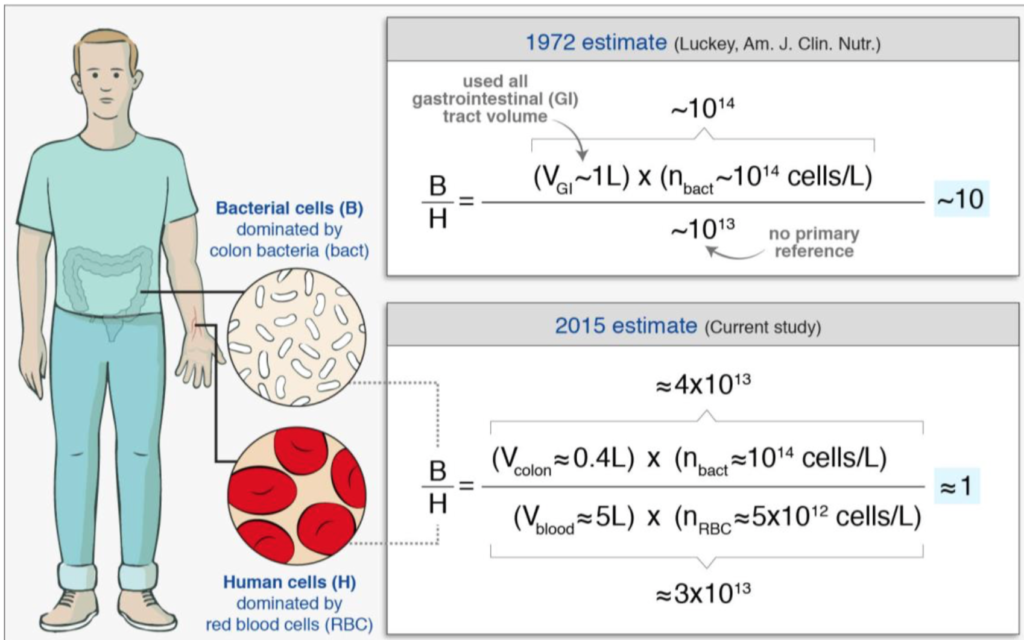Revised estimates for the number of human and bacteria cells in the body

With interest we read a review/analysis paper [1] which questions the ‘common knowledge’ that we have ten times more bacteria on/in us than we we have cells. The authors make an interesting historical analysis tracing the ’10:1′ statement back to its origins (back to the beginning of 1970s!); based on analysis of more recent literature, they come to conclusion that a more likely ratio is roughly 1:1 (see graphical summary). While one could still argue about their estimates, this paper clearly shows that some of ‘common knowledge’ is not so solid, and it is worth asking yourself what a ‘common knowledge’ is based upon.
Reminds me of a story from Richard Feynman, where “everyone knew that neutron-proton coupling is T”, which generated a lot of confusion because at some point it became the piece that did not fit in the new nice theory; but when tracking this common knowledge back in time, and looking in the original paper, it turned out that the data on which this common knowledge was based were rather shaky. Quote: “Had I been a good physicist, when I thought of the original idea … I would have immediately looked up “how strong do we know it’s T? … Since then I never pay any attention to anything by ‘experts’. I calculate everything myself.”
[1] Sender, Fuchs, Milo. Revised estimates for the number of human and bacteria cells in the body. BiorXiv. http://dx.doi.org/10.1101/036103
No Comments